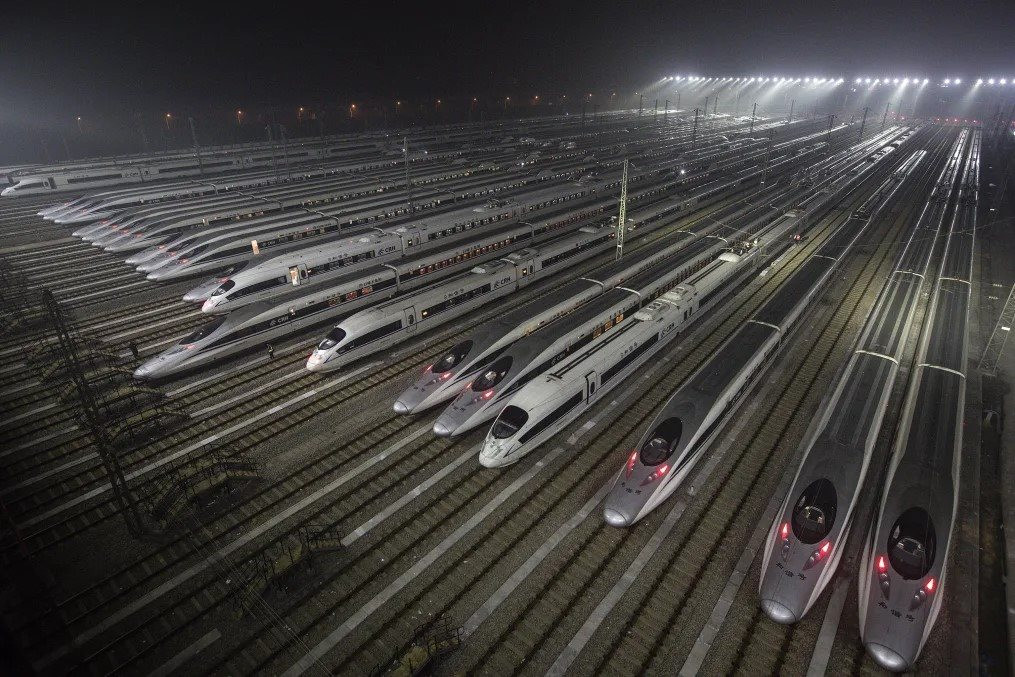
On May 1, the first day of the International Labor Day holiday, China's high-speed railway set a record for the number of people traveling in a single day, transporting 20 million passengers within 24 hours.
China's high-speed rail system has now surpassed that of Western countries. By 2022, China's high-speed rail network will be longer than the next 10 countries combined.
The countries with the longest high-speed rail lines after China are Spain with 3,600 km, Japan with 3,000 km and France with 2,700 km. Meanwhile, the US has only 735 km.
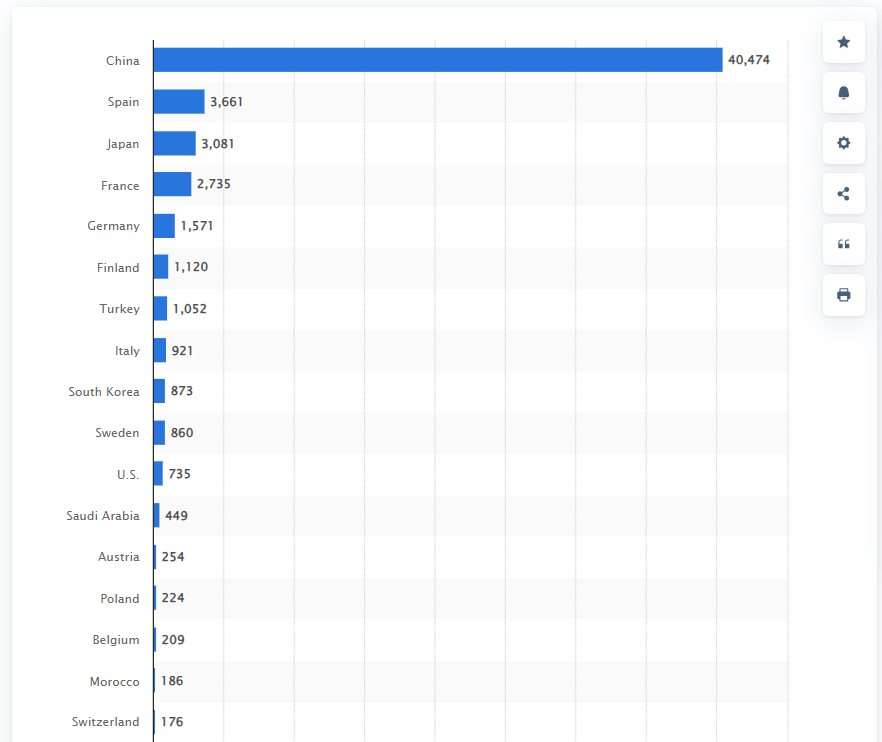
Statistics on the length of high-speed rail lines in operation worldwide by 2022, by country (unit: km)
Rapid development
According to CNN, what surprised the world was that until the early years of the 21st century, China did not have high-speed rail.
Previously, slow and cramped trains operated across the vast country, with low average speeds making journeys of more than 1,000km, such as Shanghai-Beijing, a test of endurance.
Today, the picture is very different. China now has the world's largest high-speed rail network. Since 2008, China's railway system has been setting new records.
As of 2019, all 34 provincial-level administrative regions in China – except Tibet and Macau – had opened high-speed rail. By the end of 2023, China’s railway operating distance will reach about 159,000 km, of which more than 45,000 km will be high-speed rail, longer than the circumference of the Earth (40,075 km).
The rail network is expected to nearly double in length again, to around 70,000 km by 2035.
With top speeds of 350 km/h on many routes, inter-provincial travel in China has changed and airlines no longer hold a “dominant position” in transportation operations.
According to the “Medium- and Long-Term Railway Network Planning (Adjusted in 2016)”, from 2016 to 2025 (long-term to 2030), China plans to build 8 vertical railway lines and 8 horizontal lines across the country to serve as a connecting framework for inter-provincial regions and areas.
By 2020, 75% of Chinese cities with populations of 500,000 or more will have high-speed rail.
Meanwhile, Spain – which has the most extensive high-speed network in Europe and is ranked second in the global rankings – is a tiny country compared to its more than 3,600 km of dedicated rail built to operate at speeds above 250 km/h.
In contrast, the UK currently has only 107 km while the US has only one railway line (almost) qualified for high-speed trains – CNN reviews.
Symbol of economic power
China's ambition is to make high-speed rail the mode of choice for long-distance domestic travel , but these new lines have much larger implications.
Like Japan's Shinkansen trains of the 1960s, they are symbols of the country's economic strength, rapid modernization, growing technological prowess and growing prosperity.
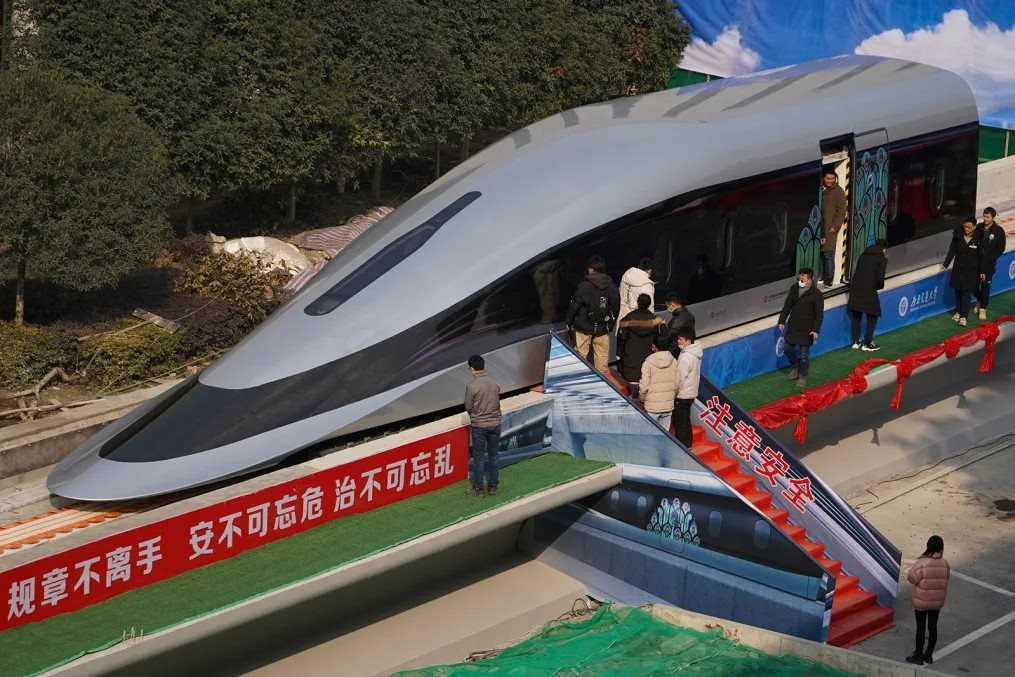
China not only has high-speed trains but also "super trains" with speeds of 620km/h. Photo: STR/AFP/Getty Images
For China, high-speed rail is also a powerful tool for social cohesion, political influence and connecting culturally distinct regions across its vast territory.
“The construction of these new railways is part of President Xi Jinping’s grand plan. It also reflects his ‘new development philosophy’, of which ‘coordinated development’ is a key concept,” said Dr Olivia Cheung, a research fellow at the China Institute at the School of Oriental and African Studies (SOAS) at the University of London.
“His plan is brilliant in that it not only connects existing cities but also old cities with new megacities being built from scratch.”
CNN said that China is repeating the historical railway miracle that North American, European, Russian, and British countries did on their own territories to develop their economies. However, the difference is that while countries spent decades building railways in the 19th and 20th centuries, China achieved its goal in just a few years.
Reference CNN
Source: https://giadinh.suckhoedoisong.vn/duong-sat-cao-toc-cua-trung-quoc-khien-cac-nuoc-phuong-tay-bi-bo-xa-phia-sau-nhu-the-nao-172240508074724895.htm











![[Video] More than 100 universities announce tuition fees for the 2025–2026 academic year](https://vphoto.vietnam.vn/thumb/1200x675/vietnam/resource/IMAGE/2025/7/18/7eacdc721552429494cf919b3a65b42e)





















































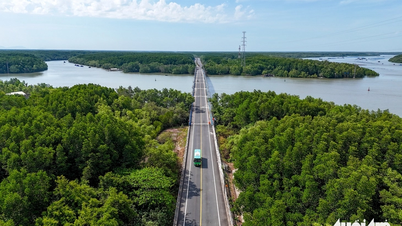
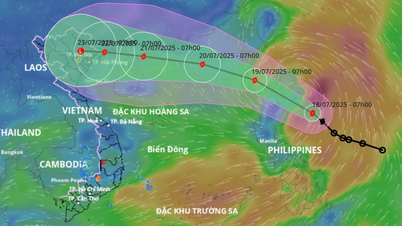



























![[Infographic] In 2025, 47 products will achieve national OCOP](https://vphoto.vietnam.vn/thumb/402x226/vietnam/resource/IMAGE/2025/7/16/5d672398b0744db3ab920e05db8e5b7d)





Comment (0)